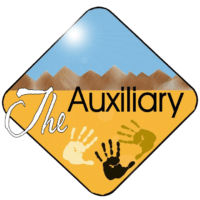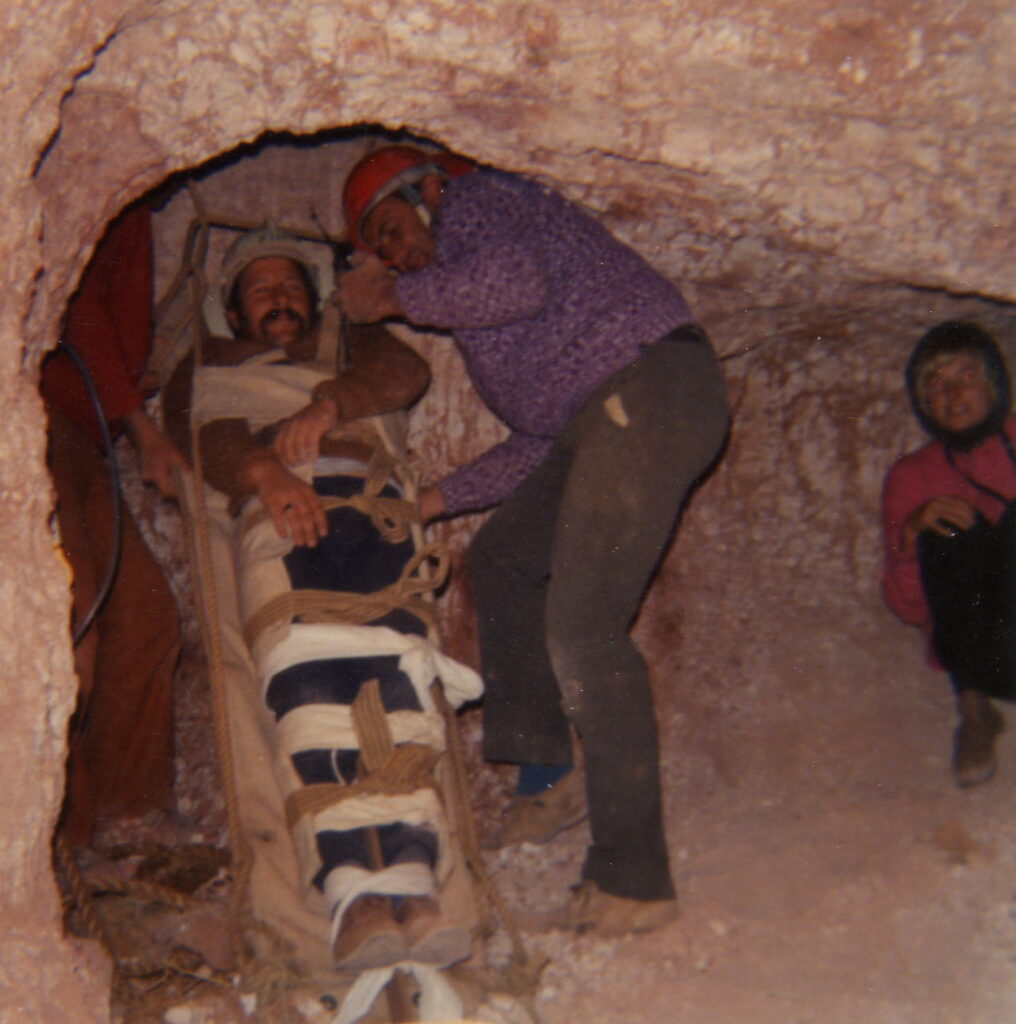Led by Mr. Bill McDougall and Mr. Dave Genet the Mine Rescue Squad was formed (Bill recalls there were “10 of us in total”) who were willing and prepared to assist and rescue opal miners involved in cave ins and mining accidents. Early equipment was kept at the police station. It was carried it on a small truck belonging to the police when going out to practice or responding to a callout.
To assist the Mine Rescue in lowering rescuers to assist injured miners at the bottom of a shaft and then to raise both the injured miner and rescuer to the top a vertical stretcher and a tripod windlass was essential to perform these duties safely. The Mine Rescue Squad sought funds from the Coober Pedy Medical Centre committee to purchase a Neil Robertson Vertical stretcher (assisting the injured person to be lifted vertically out of the mine shaft). Funds were also used to build a tripod windlass used over a mining shaft for safely carrying out the lift. ‘Andre the welder’ built the first windlass for the Mine Rescue squad.
The Coober Pedy Mine Rescue Squad formed a new committee. Jack Jurriens replaced Dave Genet as President whilst Bill McDougall remained the Secretary/Treasurer. According to Bill McDougall all Mine Rescue Volunteers were encouraged to complete the St Johns First Aid course as part of being a volunteer with Mine Recue. This was encouraged as it was quite often the Mine Rescue volunteer who would be the first to arrive at a mining accident, mostly due to their nearby proximity on the opal field.
To raise the alarm for volunteers to attend an emergency a siren would sound that could be heard throughout the community. The siren was initially located outside of the Miners Store and was activated by Mr. Beppi Coro to signal the emergency. The siren was relocated to the Lions Information Bay just outside of Radeka’s Backpackers and according to local records was still being used in 1994.
The siren was tested every Wednesday at noon but in an emergency, it had 2 distinct signals to identify which volunteer group was being called upon:
- CFS signal was a continuous blast
- Mine Rescue signal was on off on off in short bursts

2006 July Mine Rescue Training. (courtesy of Coober Pedy Mine Rescue/SES)
To maintain their skills and the opportunity of practising what to do in all kinds of emergencies the Mine Rescue/SES unit attends regular training. This training has always been conducted fortnightly on Saturdays at 2pm and this practice continues today.
(Document: ‘History of the Mine Rescue Squad, Early years as I remember them by Bill McDougall courtesy of Mr. Bill McDougall).


